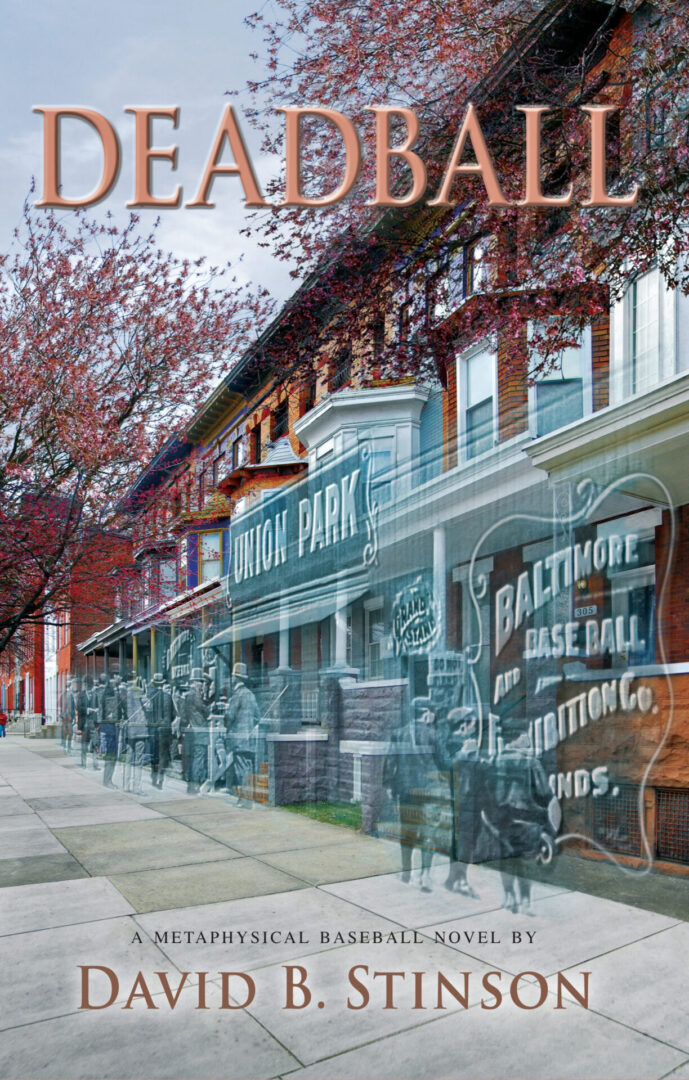Veterans Stadium in Philadelphia was home to the National League Phillies from 1971 until 2003.
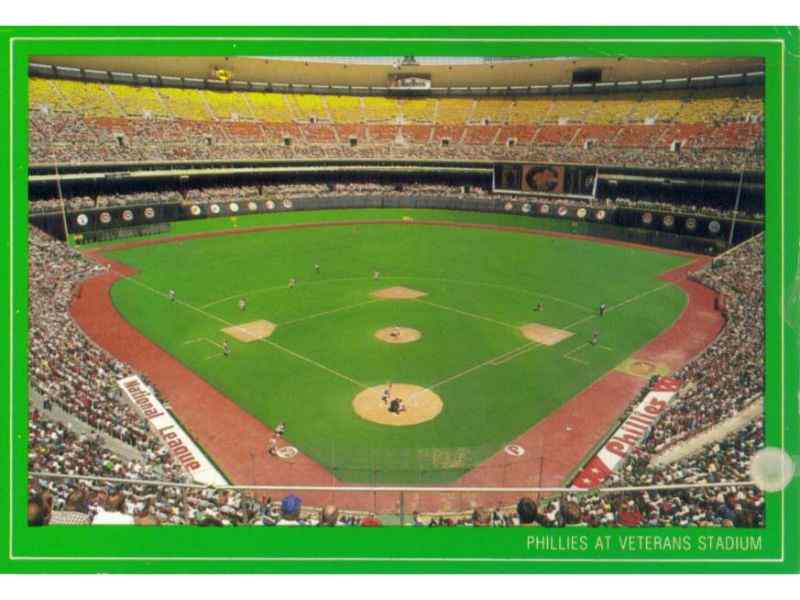
The stadium was part of a larger sports complex located south of downtown Philadelphia adjacent to Interstate 95 at Broad Street.

The only sports venue still standing in the postcard pictured above is the Spectrum, which was once home to Philadelphia’s hockey and basketball teams.
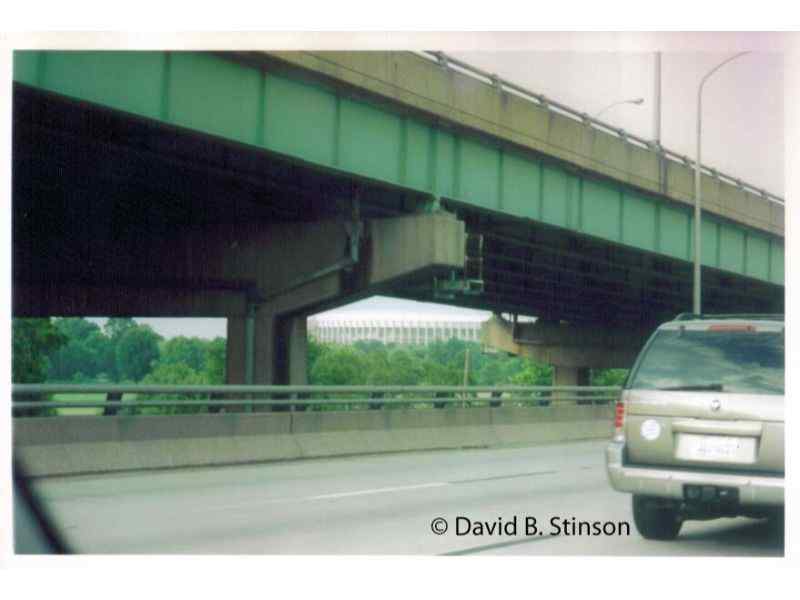
The “Vet,” as it also was known, dominated the landscape along Interstate 95 heading north into Philadelphia.

Veterans Stadium was dedicated on April 4, 1971, to the “brave men and women of Philadelphia who served in defense of their country.”
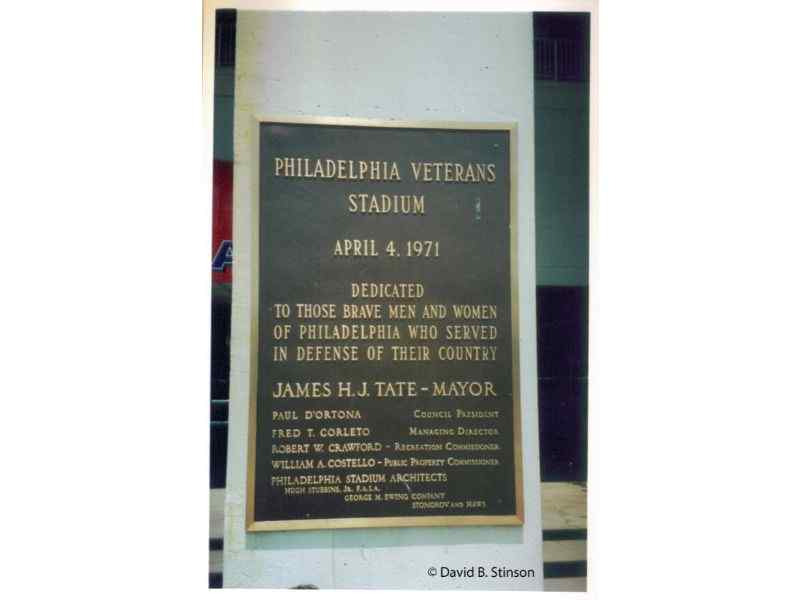
Like many of the so called “cookie-cutter” stadiums constructed in the 1960s and 1970s, Veterans Stadium’s playing field was mainly artificial turf. During summer days like the one in the picture below, it was not uncommon for the field temperature to reach 120 degrees.
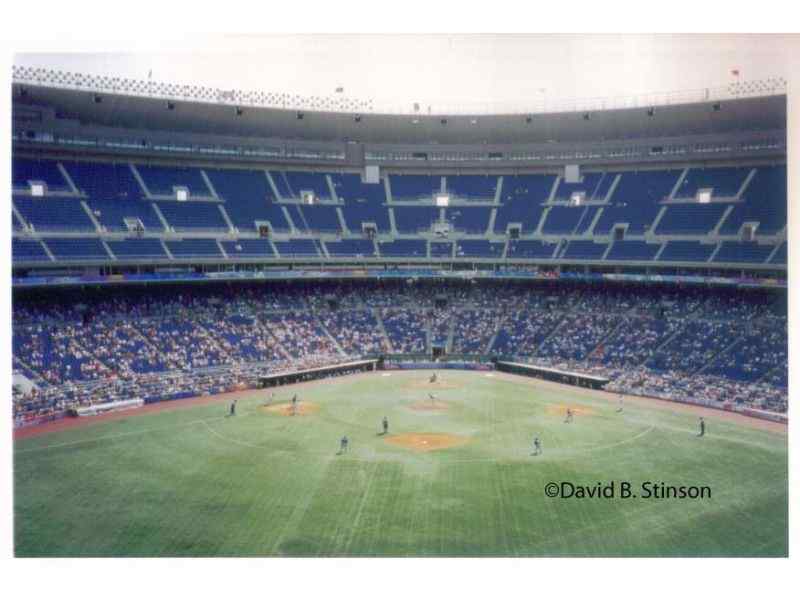
A flattened version of Philadelphia’s famed Liberty Bell stood high above the stadium’s the center field seats.
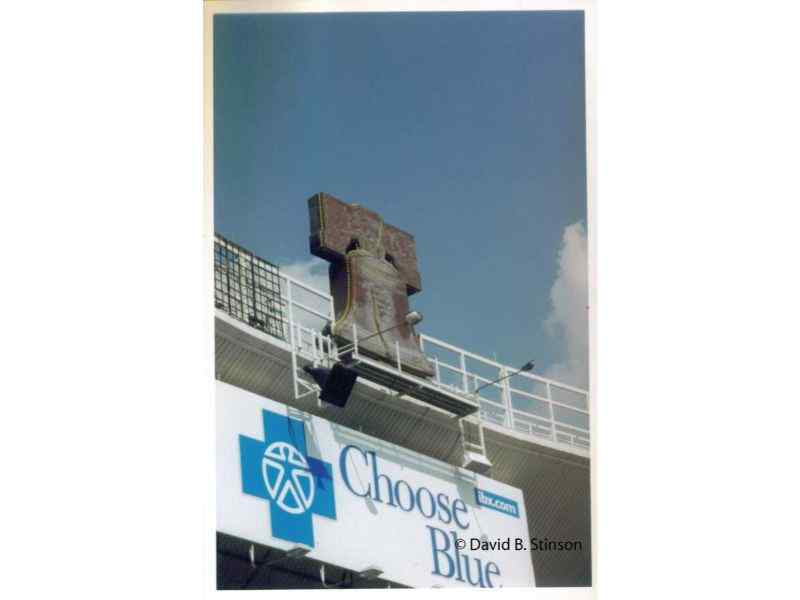
Veterans Stadium section signs continued the Liberty Bell theme.
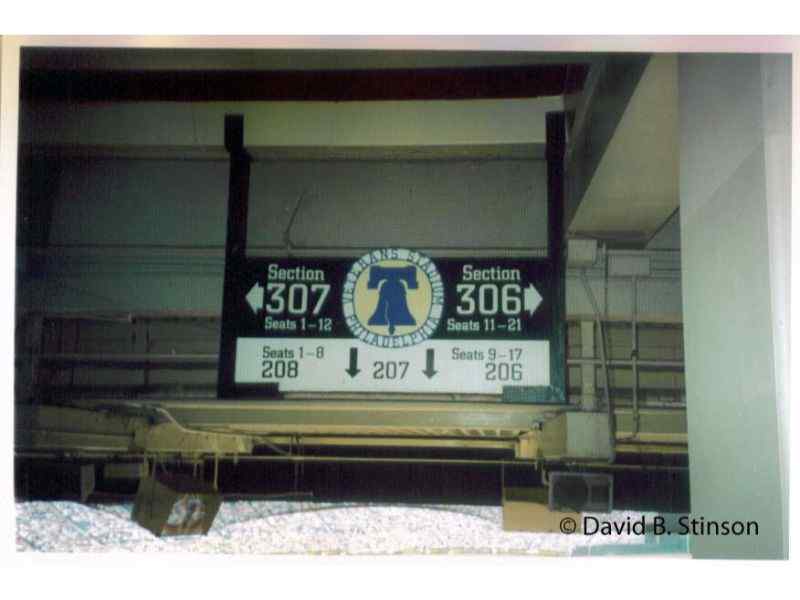
The Vet’s original yellow and red plastic seats were replaced during the 1990s with blue plastic seats, making the seating area more uniform, if less colorful.

One advantage of the artificial turf, as opposed to natural grass, was it allowed fans the opportunity to sit on the field during firework night without any fear of damaging the playing field.

The Vet’s linoleum floor on the concourse behind the 200 level looked more like something out of a high school cafeteria than a professional baseball venue.

In an effort to attract more fans, the Phillies added several family-friendly activities in the concourse, including speed pitch. Such additions, however, could not hide the fact that the Vet was not designed with such activities in mind – an approach the designers of the new ballpark were certain to change.
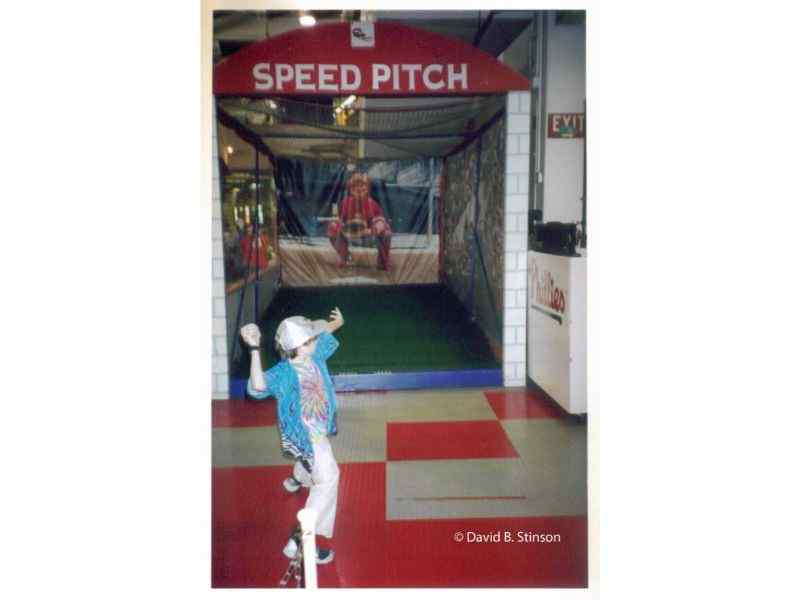
As with just about every other multi-purpose ballpark, the Vets days were numbered, both literally and figuratively.
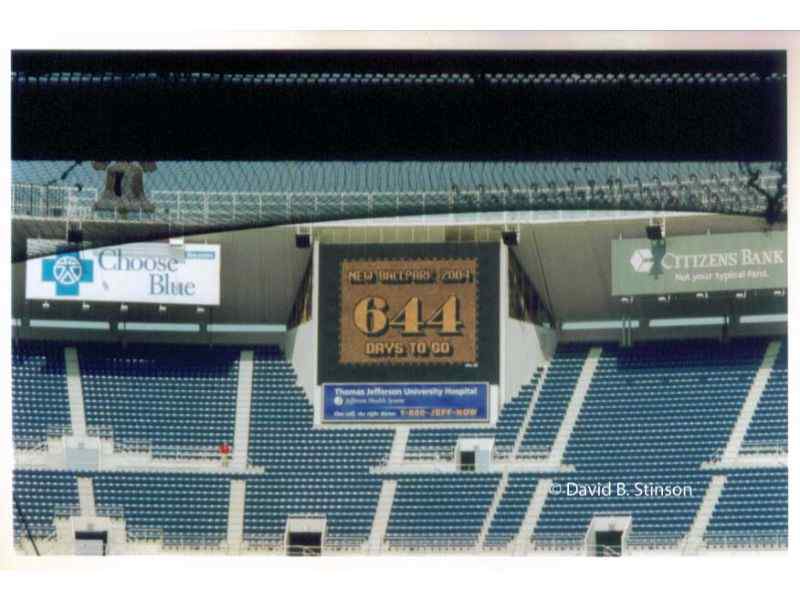
During the final two seasons of Veterans Stadium, the new ballpark, later named Citizens Bank Park, could be seen rising in a parking lot east of the Vet.
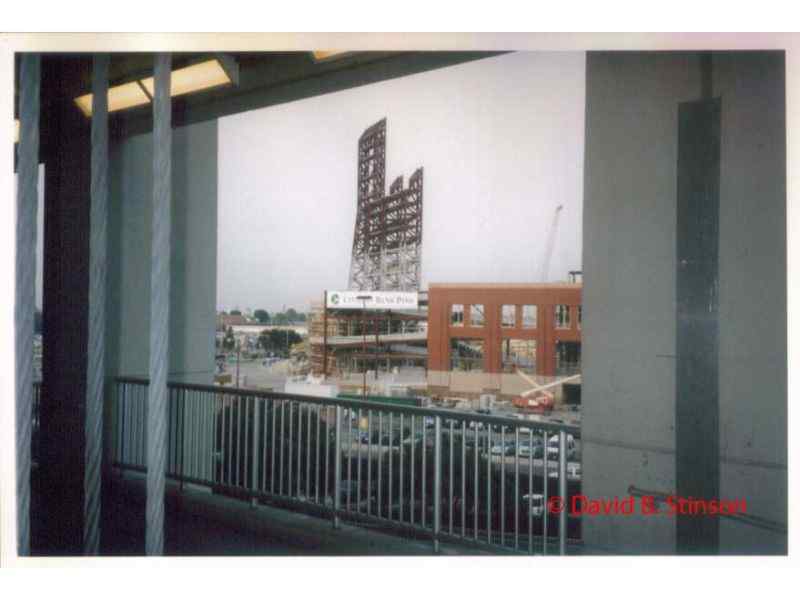
Although not visible from inside the ballpark’s seating bowl, construction of Citizens Bank Park was easily monitored standing along the outer concourse.
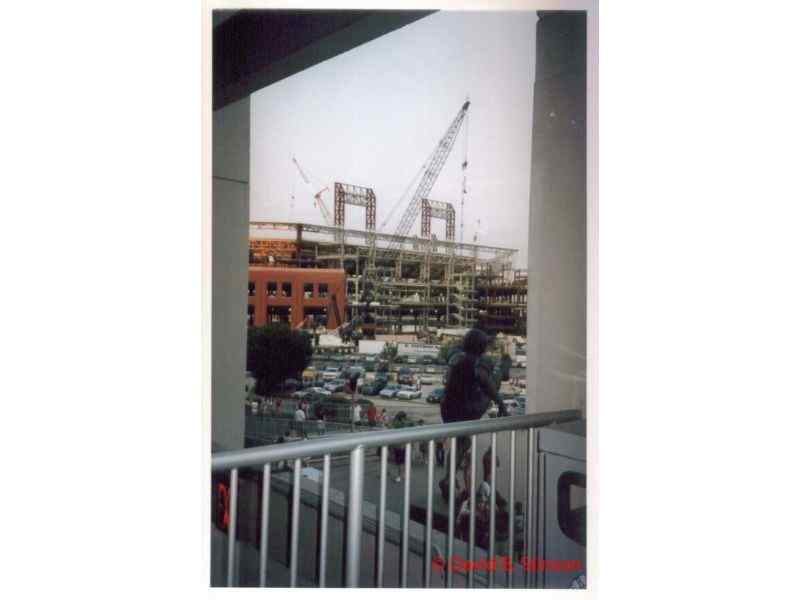
In late winter 2003 and early spring 2004, the Phillies and the City of Philadelphia put finishing touches on the new ballpark, while the Vet stat silently by, awaiting demolition.

The end came quickly for Veterans Stadium. During the summer of 2004, fans were treated with live action views of the stadium’s demolition site as city workers carted away stadium debris.
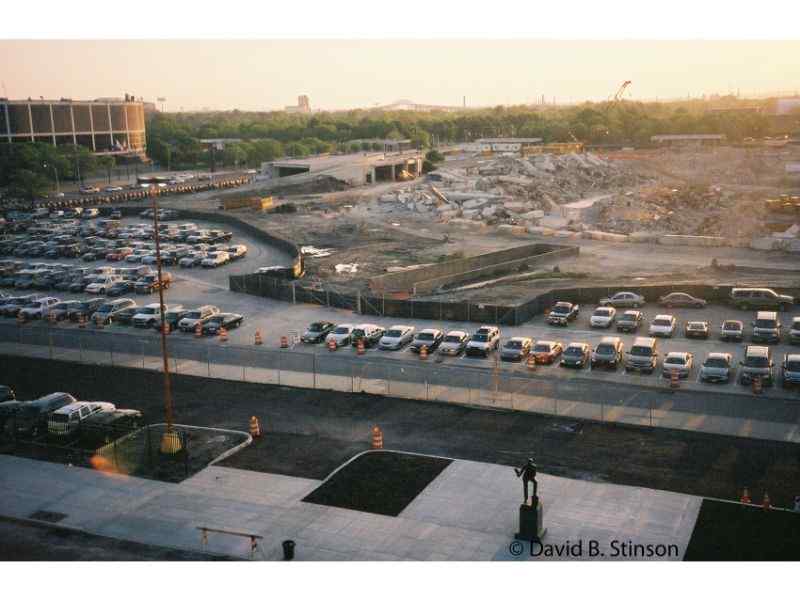
Although the former site of Veterans Stadium is now a parking lot, the Phillies ballclub and City of Philadelphia have included several markers and monuments recognizing the lost ballpark. The entrance to parking area, Lot T, is a good place to start.
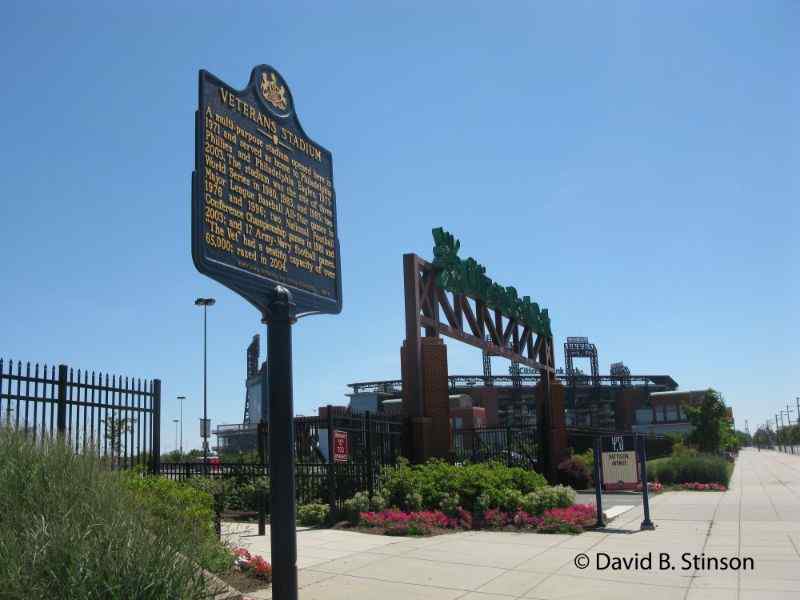
A state historical marker pay tribute to significant milestones of Veterans Stadium.
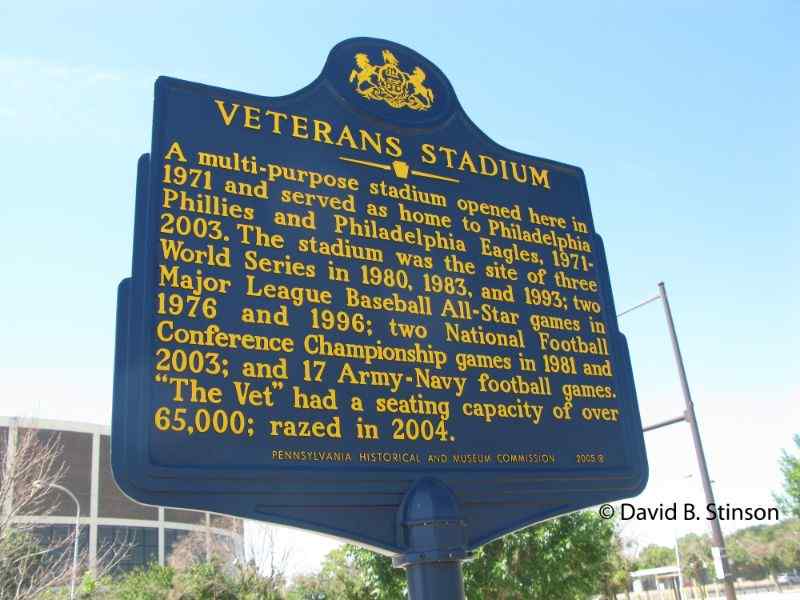
The Phillies also relocated the Veterans Stadium dedication plaque to a garden on Pattison Avenue.
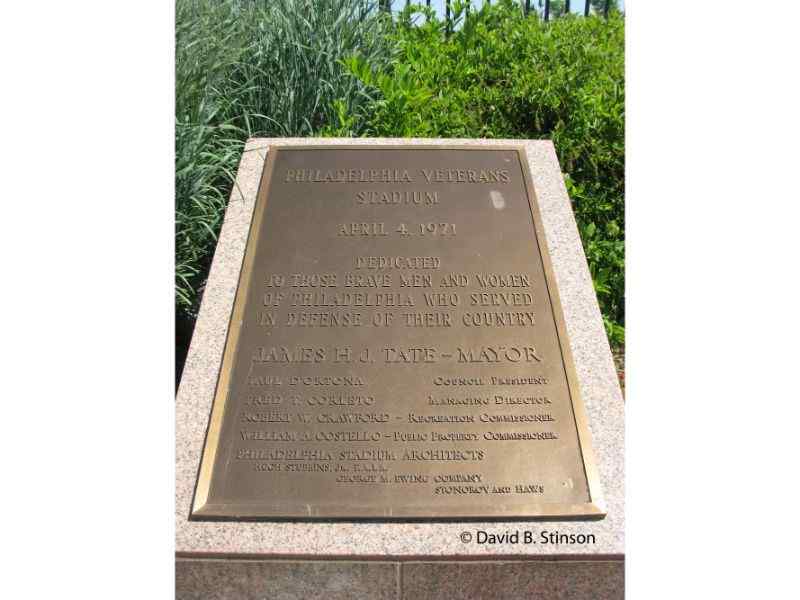
Recognizing that the City of Philadelphia had dedicated Veterans Stadium in honor of Philadelphia’s veterans, the Phillies erected a new monument at the former site of Veterans Stadium as an “everlasting memorial to veterans who have defended America’s freedom since its inception in Philadelphia on July 4, 1776. ”
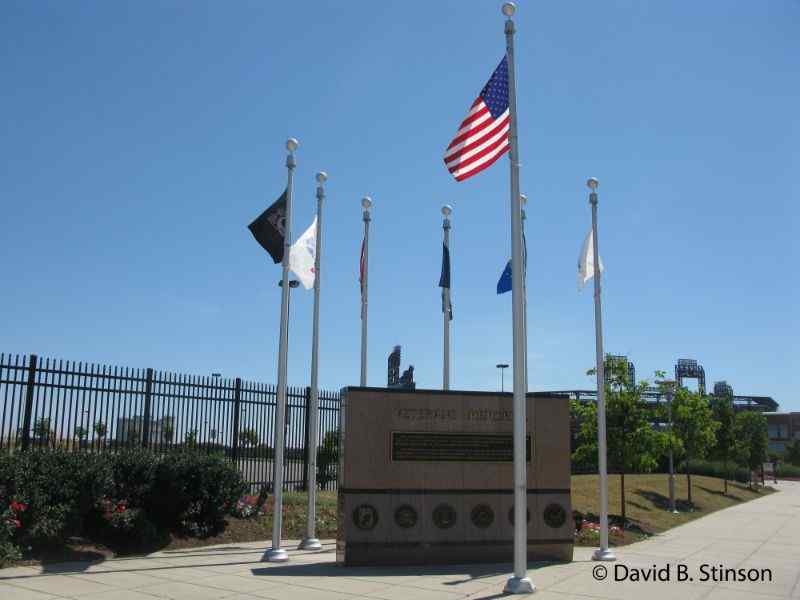
The Phillies also restored four sports-themed statutes that once stood outside the entrances to Veterans Stadium. Designed and produced by Joe Brown, a Philadelphia native, the statues now ring the parking lot that sits atop the Vet’s former site.
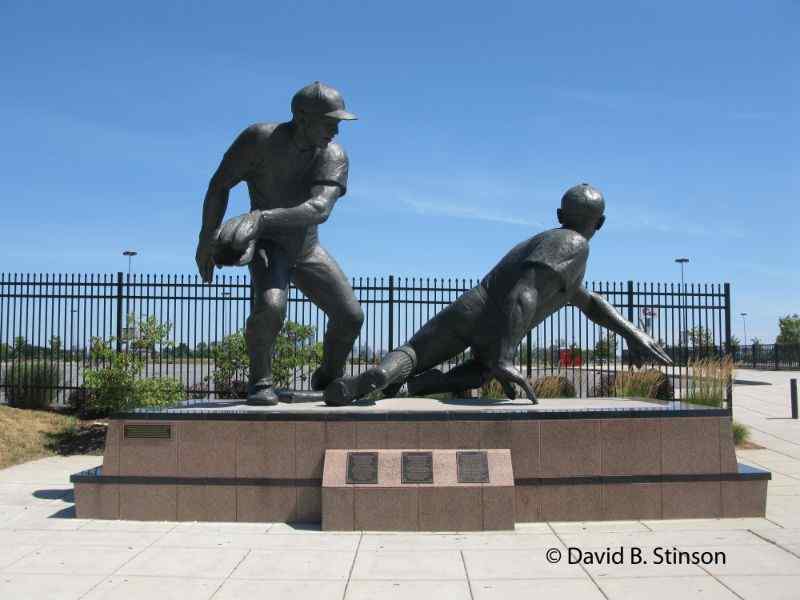
The statute of a player sliding into base sits along Pattison Avenue, while the statue of a batter sits across the parking lot on South 1oth Street.

The Phillies also relocated between Citizens Bank Park and the site of Veterans Stadium a statute of former Philadelphia Athletics manager and owner Connie Mack. The statue dates to the 1950s and originally was located on Lehigh Avenue in a park across from Connie Mack Stadium.
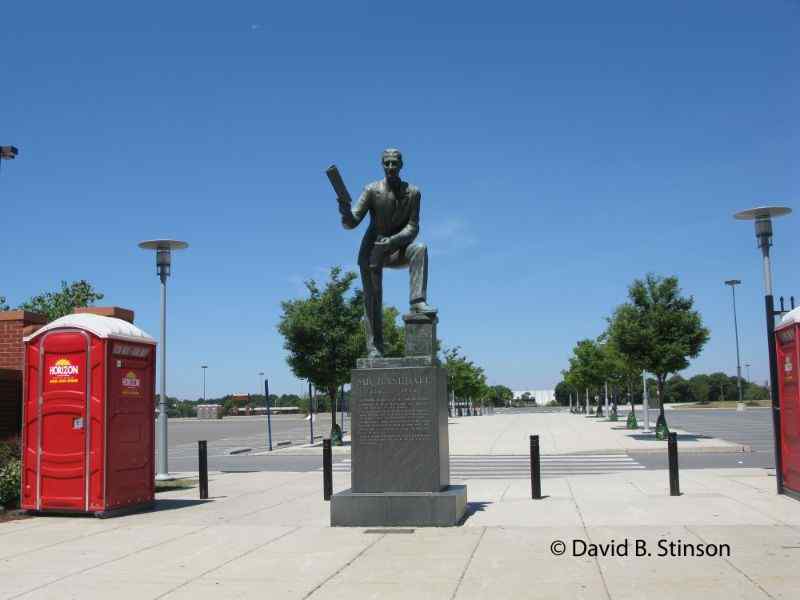
Parking Lot U, Area 3, marks the spot of the Veterans Stadium infield.
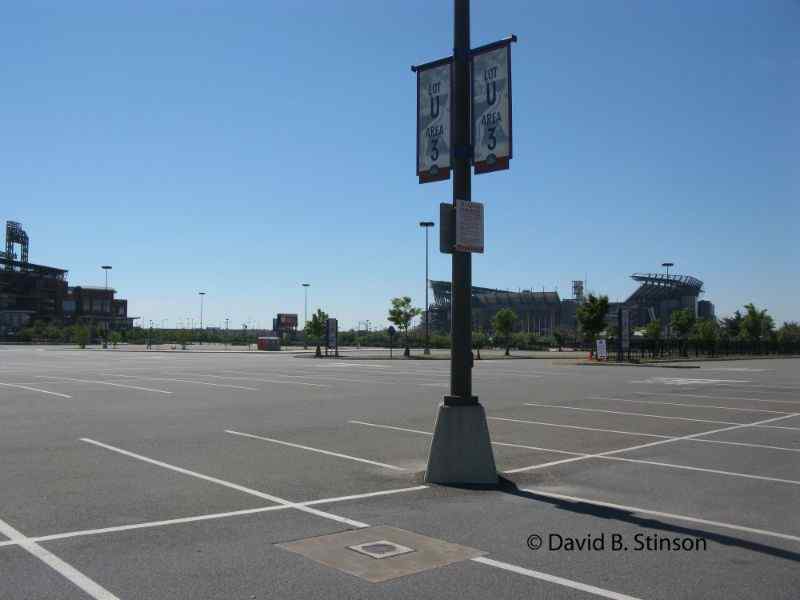
A granite marker sits in the former location of home plate .
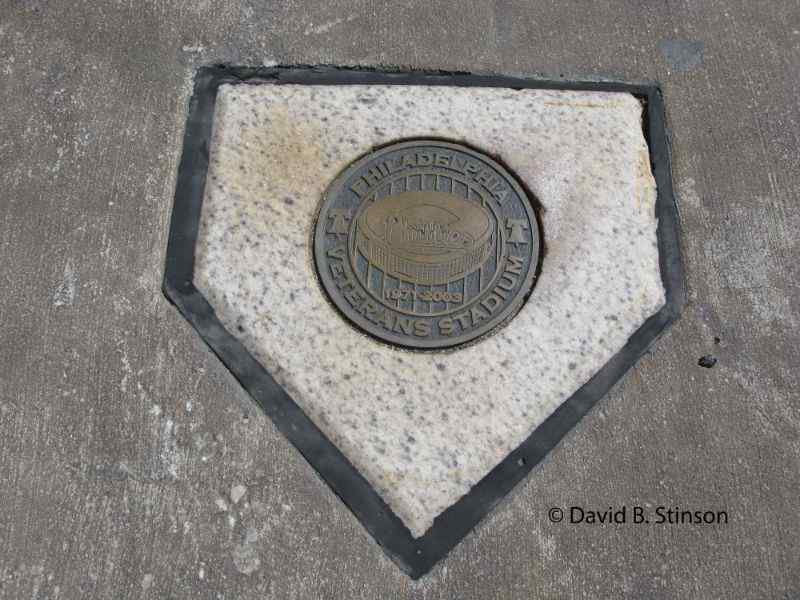
The marker is located in a driving lane as opposed to a parking space.
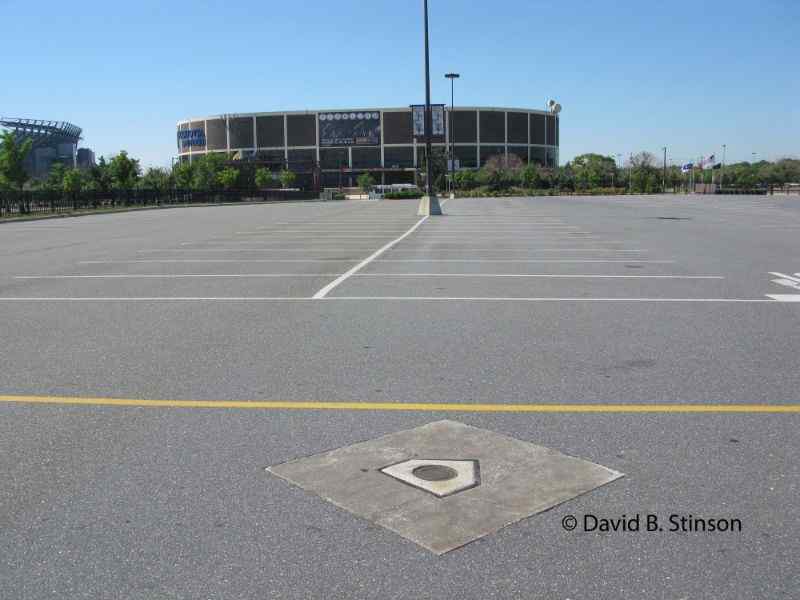
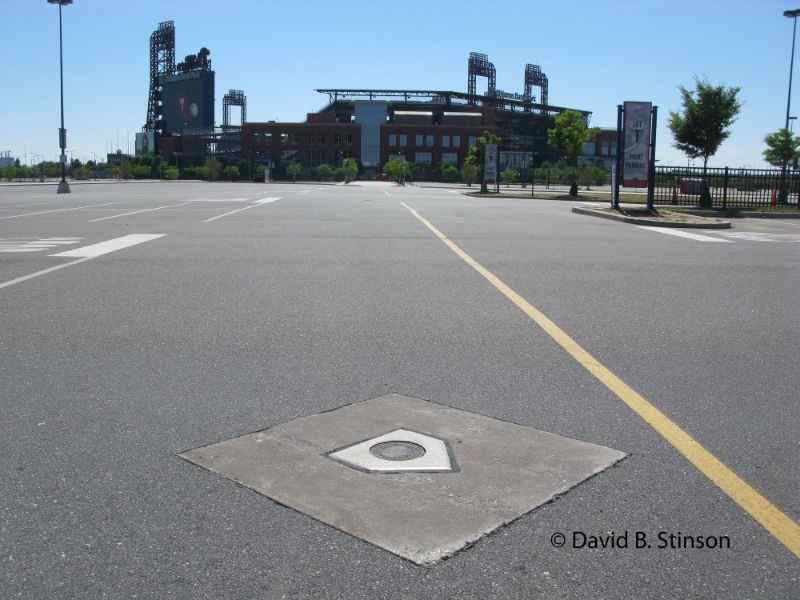
The same is true for the pitchers mound, now flattened, which also resides in a Lot U driving lane.
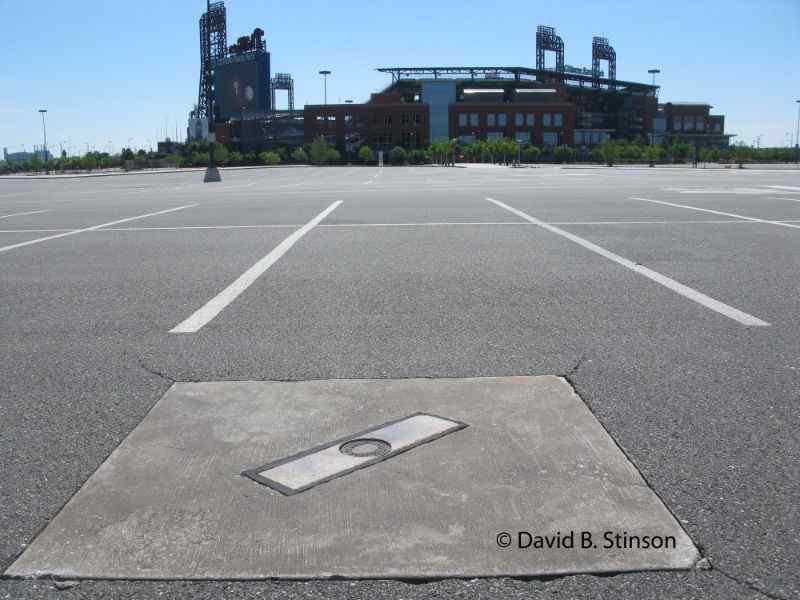
The Phillies have marked the former location of each bases as well.
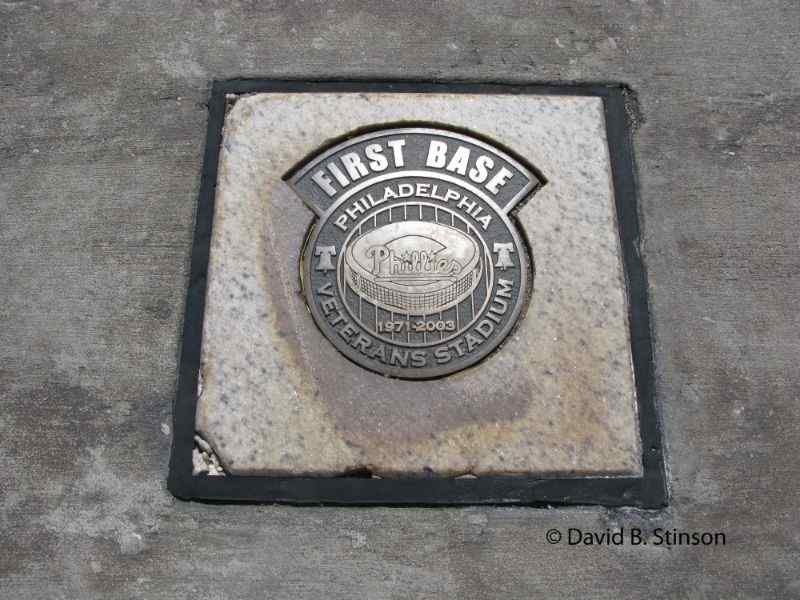
The granite marker for third base provides baseball fans the unique opportunity of parking their cars atop the spot where Hall of Famer Mike Schmidt once roamed the hot corner. Let me just say what a thrill it was to park my car there. A tip for those who want to experience the same thrill – arrive early.

The one vestige of Veterans Stadium that remains, still in its original location, is an electronic Phillies sign visible from I-76 (the Schuylkill Expressway) that resides near the entrance to parking Lots W and X.
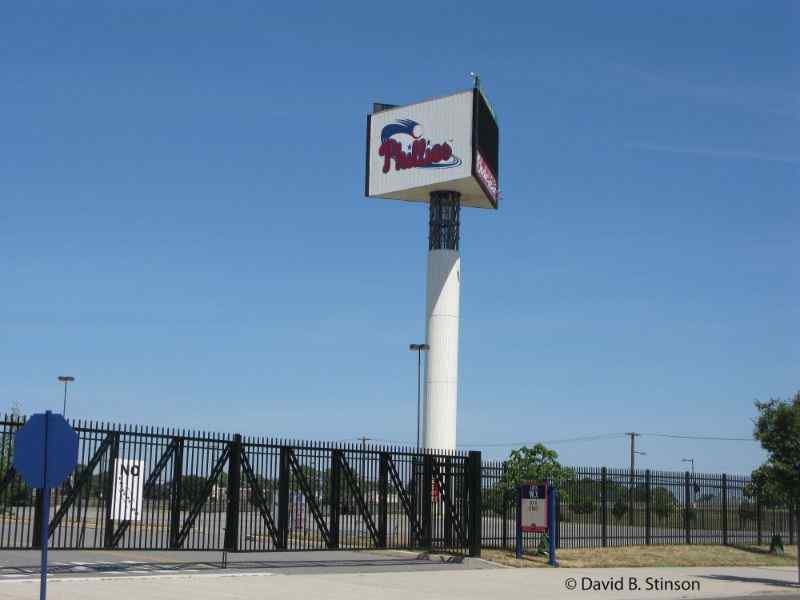
That sign likewise is visible from inside Citizens Bank Park, out beyond center field.
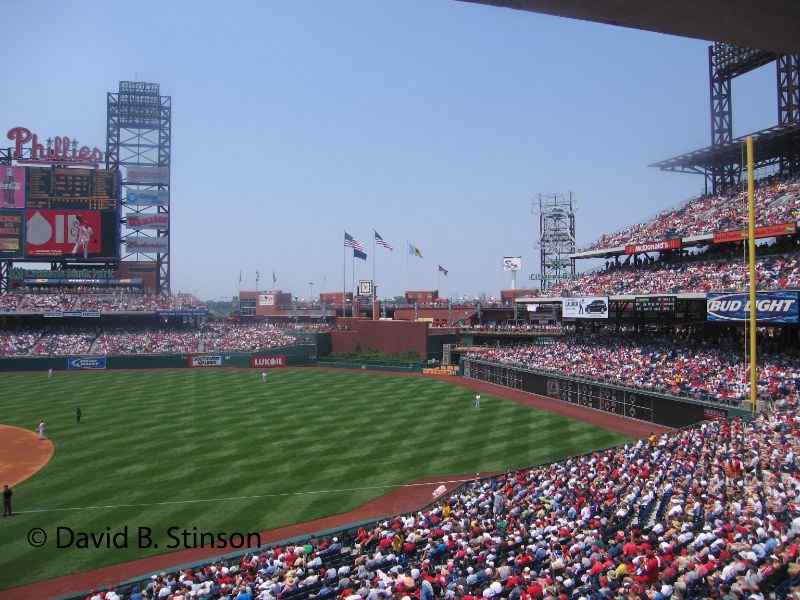
The many tributes and monuments to Veterans Stadium are well worth a stop for baseball fans visiting Citizens Bank Park. The Vet may be long gone, but, thanks to the Phillies and the City of Philadelphia, she clearly has not been forgotten.
